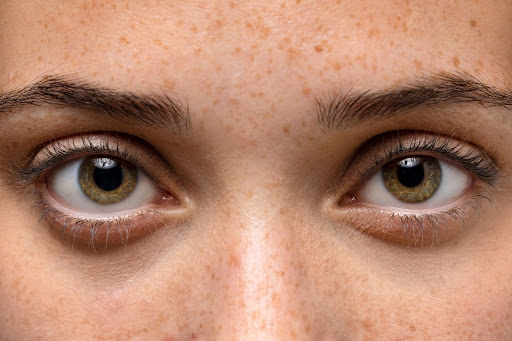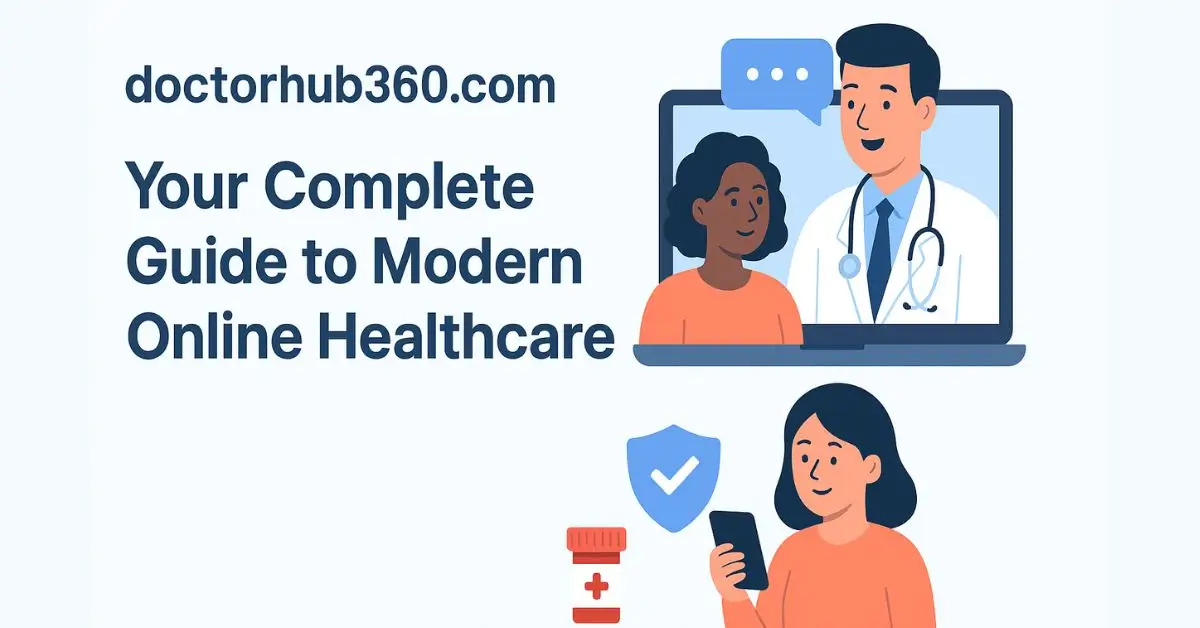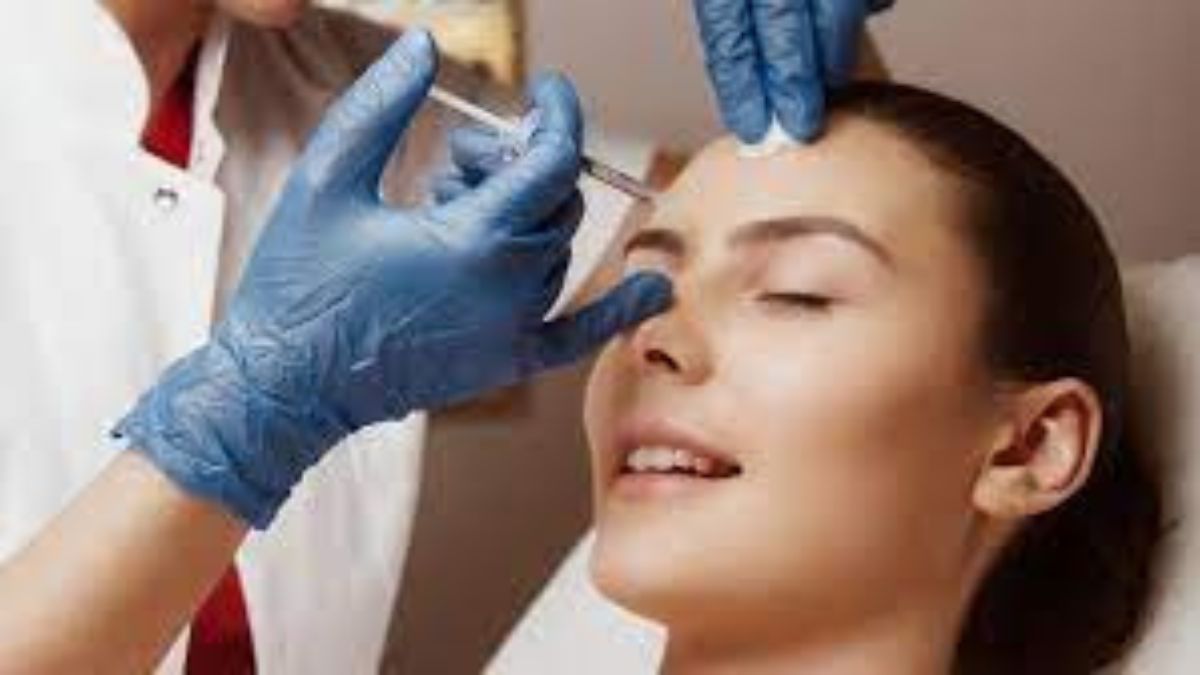HEALTH
How Long Does Eylea Stay in Your System?

Our eyes are the windows to our world. But if they become clouded due to blurred vision. Diabetic retinopathy, macular edema, and retinal vein occlusion can drastically affect your life. Daily tasks like reading, driving, and recognizing faces can become frustrating and challenging.
Fortunately, advancements in ophthalmology offer a revolutionary treatment. Eylea can protect your vision and preserve the clarity of your world. New options always provoke questions. Patients frequently ask: “How does Eylea treatment work” and “How long does it last in our bodies? Keep reading to find out the answers.
What Is Eylea?
Eylea is an anti-VEGF drug primarily used to treat several serious eye conditions that can lead to vision loss. It is developed and manufactured by Regeneron Pharmaceuticals, a leading biotechnology company based in the United States.
The active drug, aflibercept, is a recombinant fusion protein. It works by inhibiting vascular endothelial growth factor (VEGF) and placental growth factor (PIGF). They are involved in the formation of abnormal blood vessels and leakage that contribute to eye diseases.
Eylea received approval from the FDA in November 2011. It has since become a widely used treatment for various retinal diseases.
Patients treated for visual acuity may prefer Eylea as a less invasive option compared to laser treatment.
Note: Save significantly by purchasing Eylea wholesale at Ogomed. They are a trusted supplier of medical and aesthetic treatments of world-known brands. Eylea is eligible for healthcare professionals only!
How Does Eylea Work?
Anti-VEGF therapies like Eylea (aflibercept) work by blocking the action of VEGF, thereby reducing the growth of these abnormal blood vessels and the associated fluid leakage.
Eylea helps prevent more damage to your eyes. It keeps your vessels healthy and stops fluid leaks that can blur vision. Imagine your eye is like a garden. Blood vessels are likely tiny water hoses that bring food and water to keep everything healthy. But sometimes, a signal goes wonky, and these hoses grow too much, creating a big mess. This can cause blurry vision, like looking through a dirty window.
Eylea helps in your eye garden. It acts like a sponge, soaking up the bad signal that tells the hoses (blood vessels) to grow too much. With less of that signal, the hoses calm down and stop making a mess. This helps keep the important part of your eye (the macula, like the flower in the garden) healthy and lets you see clearly again.
The macula is a part of the retina responsible for color, detail, and central vision. It is like the screen at the back of your eye, with tons of special cells called photoreceptors. The macula is small, about 5 millimeters across, but essential for the vision quality.
What Is Vascular Endothelial Growth Factor?
VEGF is a protein that plays a critical role in the formation of new blood vessels. It’s essential for normal physiological processes such as wound healing and the formation of blood vessels during embryonic development.
However, VEGF can contribute to the growth of abnormal blood vessels in the retina in certain pathological conditions, such as eye diseases like diabetic retinopathy and age-related macular degeneration (AMD).
How Often Do You Need Eylea Injections?
Unlike medications taken orally that quickly enter your bloodstream, Eylea works differently. It comes in a single strength (2 mg/0.05mL), but the frequency of injections can differ based on the medical conditions.
Eylea treatment often starts with a series of injections spaced closely together, followed by less frequent injections as the condition stabilizes.
- Initial phase: one Eylea injection every month for the first 12 weeks of treatment.
- Maintenance phase: once every 2 months. Some patients may continue with eye injections every 4 weeks if their doctor feels it’s necessary.
- Extended maintenance: after one year, some patients may move to intravitreal injections every 3 months.
Eylea begins to show effects within 3 months, with some patients noticing improvements as early as 1 month. However, certain conditions might require up to six months to demonstrate significant changes.
How Long Does an Eylea Injection Last?
The duration of an Eylea injection’s effectiveness varies. Typically, Eylea lasts longer than drops or oral medicine, so you don’t need as many shots.
After intravitreal injections, Eylea primarily stays within the vitreous humor, where it exerts its therapeutic effects. The active drug, aflibercept, has a systemic half-life (5.5 days). It is cleared from the bloodstream relatively quickly. However, its localized presence can last for about 50 days. Regular injections are typically required to maintain therapeutic benefits.
Who Is A Good Candidate for Eylea?
An eye doctor, or ophthalmologist, may prescribe Eylea to treat:
- diabetic retinopathy (DR);
- diabetic macular oedema (DME);
- wet age-related macular degeneration (AMD);
- central retinal vein occlusion (CRVO);
- branch retinal vein occlusion (BRVO);
- retinopathy of prematurity (ROP).
While Eylea can be a great solution for someone, it’s not suitable for everyone. A doctor will consider your health history and the severity of the condition.
Certain conditions and factors might make Eylea unsuitable for some patients:
- allergic reactions to Eylea or its components;
- infections in or around the eye;
- glaucoma;
- recent stroke and heart attack;
- cardiovascular disease.
Pregnant or breastfeeding women should consult their healthcare provider, as the effects of Eylea on unborn babies or nursing infants are not well studied.
Always seek guidance from healthcare professionals to assess your suitability for Eylea treatments.

How Is Eylea Injection Done?
The main steps of the procedure:
Preparation: They may dilate your pupils using eye drops to get a better view of the back of your eye. The area around your eyes will be cleaned with an antiseptic solution to prevent infection. Anesthetic drops are used to numb the surface of your eye, ensuring minimal discomfort during the injection.
An eye speculum, a small device, may hold your eye open during the procedure. You will be asked to look in a specific direction to help your doctor access the injection site easily.
Injections: Eylea is administered through an intravitreal injection. This means a qualified eye doctor injects it directly into the vitreous cavity of your eye. You might feel slight pressure or a brief pinch, but it should not be painful due to the numbing drops. This targeted delivery allows the medication to work directly at the source of the problem.
Post-procedure: Your doctor may apply antibiotic drops to prevent infection after the injection. You might be given an eye shield (dark glasses) to protect your eyes for a short period.
What Benefits Can Eylea Provide?
Eylea shots are biologic drugs. There are no available biosimilar forms now. This medicine is made by one manufacturer, Regeneron Pharmaceuticals, ensuring consistent quality and reliability in every dose.
Patients and healthcare providers can trust that each injection will deliver the same therapeutic effect. This reduces the risk of variability that can sometimes occur with biosimilars.
Eylea improves central vision by targeting abnormal blood vessels in the eye. Clinical trials have shown that patients treated with Eylea experience significant improvements in visual activity. Unlike Eylea, which targets the underlying cause of macular edema, other medications may only address the symptoms.
These eye injections help manage diabetic retinopathy by inhibiting the growth of abnormal vessels. They effectively treat macular edema by reducing swelling and fluid release in the retina.
As a VEGF-blocker drug, Eylea shows the progression of macular degeneration, a leading cause of blindness.
Can Eylea Treatment Improve Your Vision?
Early intervention with Eylea prevents further damage to the macula. It helps safeguard your vision by controlling fluid buildup and abnormal blood vessel growth. This is essential for daily activities like reading, driving, and recognizing faces.
Clinical studies have shown that Eylea can improve vision in some patients, particularly those experiencing blurry vision or distorted images due to macular edema. The degree of vision acuity can vary depending on the severity of the condition and individual response to the treatment.
Eylea may not restore vision to its original state, especially if vision loss has already occurred. However, it can significantly slow down the progression of vision degeneration.
What Are the Possible Side Effects?
Like other treatments, Eylea can potentially cause side effects. Note that everyone experiences the same reactions, and their severity may vary. Let’s overview.
The most frequent
- blurred vision;
- eye irritation;
- increased eye pressure;
- eye redness;
- eye pain;
- floaters (small spots or squiggly lines).
Allergic reaction
A mild allergic reaction can be at the injection site, such as redness or irritation. A severe allergic reaction can include these symptoms: swelling of the face, tongue, or throat, difficulty breathing, or severe itching. Contact medical emergency promptly if these adverse reactions occur.
Eye complications
There have been reports following Eylea about complications in the eye.
- macular edema — swelling of the central part of the retina.
- retinal detachment — retina pulls away from its normal position.
- endophthalmitis — eye infection.
They are rare side effects. However, patients should be aware of these risks.
Systematic effects
Some patients may experience high blood pressure during or after treatment. There is a potential risk of blood clots, although this risk is considered low and specific to certain individuals with predisposing factors.
Other considerations
Regular monitoring of eye cells and overall eye health is crucial during treatment. Eylea cure may interact with other medications. It would be best if you inform your healthcare provider about all medicines you are taking to prevent adverse drug interactions.
Is Eylea Safe for Long-Term Use?
Many eye diseases requiring Eylea are chronic. It is often used as a long-term management tool to control symptoms and prevent further vision loss. As with any long-term medication, regular eye exams are important to assess the ongoing benefits and potential side effects of Eylea. Openly communicate with your doctor to determine progress and form a tailored treatment plan.
The Summary
Eylea doesn’t stay in your system permanently. It’s administered directly into the eye and works locally to reduce fluid buildup and abnormal blood vessel growth. The effects of Eylea last for several weeks. Treatment typically involves regular injections to maintain its benefits. The exact treatment schedule depends on the individual and the specific eye condition.
HEALTH
doctorhub360.com: Your Complete Guide to Modern Online Healthcare

In an age where virtual healthcare has become a daily necessity, doctorhub360.com stands out as a comprehensive digital platform connecting patients with certified doctors, specialists, and healthcare services from the comfort of home. With the rising demand for telemedicine, this platform redefines accessibility by merging technology and healthcare under one secure, user-friendly hub.
The medical industry has evolved beyond the four walls of hospitals. Patients now seek convenience, quick access, and reliable medical advice online — and that’s exactly what doctorhub360.com promises to deliver: a 360-degree healthcare experience that covers consultation, diagnosis, prescriptions, and continuous health monitoring.
Quick Answer
doctorhub360.com is an all-in-one telemedicine platform offering 24/7 doctor consultations, digital prescriptions, appointment booking, and secure health record management — all accessible through desktop and mobile devices for fast, reliable, and private care.
The Growing Role of Online Healthcare
The global digital health market has witnessed exponential growth in recent years. According to medical analysts, over 60 % of doctor consultations in 2025 will take place online or through hybrid systems. Platforms like doctorhub360.com are at the forefront of this evolution, enabling users to speak to doctors anytime, anywhere, without waiting rooms or travel costs.
“Telehealth isn’t the future — it’s the present,” says Dr. Mariah Bennett, a family medicine specialist and digital-care advocate. “Platforms like doctorhub360.com simplify patient access to quality medical care while maintaining the same level of professional reliability.”
Key Features of doctorhub360.com
doctorhub360.com has been designed to simplify healthcare for both patients and practitioners. Below are its standout features that contribute to its growing reputation.
1. Instant Online Consultations
The platform allows users to book instant video calls or chat sessions with licensed physicians across multiple specialties — from general medicine to dermatology and mental health.
2. Secure Prescription Services
After a consultation, doctors can send digital prescriptions directly to your profile or linked pharmacy. Every prescription follows national medical standards and includes dosage and follow-up guidance.
3. Health Record Integration
Patients can store, access, and share their electronic health records (EHRs) within the platform. This allows for better tracking of chronic conditions and faster emergency response.
4. 24/7 Availability
With round-the-clock medical support, doctorhub360.com ensures help is always available. Whether it’s a midnight fever or an urgent refill, patients can reach certified healthcare professionals instantly.
5. Multilingual and Accessible Interface
The platform supports multiple languages and accessibility tools for users with disabilities — making it inclusive and easy to use worldwide.
Why doctorhub360.com Is Changing the Way We See Healthcare
doctorhub360.com combines the trust of in-person healthcare with the speed and convenience of digital technology. Patients save time, reduce costs, and get immediate answers — all while maintaining data privacy.
Moreover, it empowers doctors by providing an integrated workspace for managing appointments, billing, and patient history. The result is a more efficient healthcare ecosystem that benefits both sides.
Advantages for Patients
- Immediate access to professional medical advice
- Transparent pricing and service clarity
- No travel, waiting rooms, or hospital queues
- Flexible consultation options (text, audio, video)
Advantages for Doctors
- Wider patient reach
- Automated scheduling
- Secure medical documentation
- Streamlined communication and follow-ups
Comparison Table: doctorhub360.com vs. Other Telemedicine Platforms
| Feature / Metric | doctorhub360.com | General Telemedicine Site A | General Telemedicine Site B | Hospital App C |
|---|---|---|---|---|
| Consultation Cost | Moderate, transparent | High | Low | Variable |
| Ease of Use | Intuitive dashboard, multilingual | Complex interface | Average | Limited |
| Accessibility | 24/7 support, cross-device | Restricted hours | Limited devices | Hospital-based only |
| Performance Speed | High (optimized servers) | Moderate | High | Slow response times |
| Data Security | HIPAA-grade encryption | Standard SSL | Basic security | Varies |
| Prescription Integration | Instant e-prescriptions | Manual approval | Limited | Full but slow |
| Overall Efficiency | ★★★★★ | ★★★ | ★★★★ | ★★★ |
Table 1: Comparative analysis of doctorhub360.com against common telehealth alternatives (data simulated for illustration).
How doctorhub360.com Works: Step-by-Step
Step 1 – Sign Up
Register using your email or mobile number. Identity verification ensures each account belongs to a real person.
Step 2 – Select a Specialty
Choose from general practitioners, pediatricians, nutritionists, psychiatrists, and more.
Step 3 – Book Consultation
Pick your preferred time slot or use instant connect for emergencies.
Step 4 – Attend Appointment
Meet your doctor via HD video chat or secure text messaging. Upload relevant test results if needed.
Step 5 – Receive Prescription and Follow-Up
Your doctor issues a secure digital prescription and follow-up reminders directly through your dashboard.
Security and Privacy: The Core of Trust
Healthcare is impossible without trust, and doctorhub360.com invests heavily in data encryption and patient confidentiality. The system uses HIPAA-compliant frameworks, two-factor authentication, and restricted access controls for doctors and admins.
According to the Health Information Privacy Council (HIPC), data protection is among the top three priorities in digital medicine. Doctorhub360.com meets these standards by maintaining end-to-end security during every consultation.
“The moment patients feel safe sharing their symptoms online, the digital care system succeeds,” states cybersecurity expert Alan Rhodes, emphasizing privacy as a prerequisite for innovation.
User Experience and Interface Design
The interface of doctorhub360.com is tailored for simplicity. It minimizes clicks, integrates quick-action icons, and provides smart notifications for prescriptions, appointments, and updates.
Highlights
- Clean dashboard with patient-doctor messaging
- Voice-command accessibility
- Custom health reminders and smart notifications
- Multi-device synchronization
These enhancements ensure that both young adults and seniors can navigate healthcare online without frustration.
Industry Standards and Professional Compliance
doctorhub360.com aligns with several international healthcare standards, including:
- HIPAA (Health Insurance Portability and Accountability Act) for U.S. data protection
- HL7 v2 & FHIR protocols for secure health record exchange
- ISO/IEC 27001 for information security management
This compliance strengthens its credibility among both practitioners and patients. Doctors using the platform must verify their medical licenses and professional credentials, ensuring a network of trusted specialists.
Accessibility and Inclusivity
The platform promotes universal healthcare access, especially for rural or mobility-limited users. By bridging the digital divide, doctorhub360.com empowers individuals who previously lacked consistent medical access.
It also supports screen readers, text-to-speech tools, and adjustable contrast modes for visually impaired users — reflecting modern inclusivity standards.
The Economic Advantage
Traditional doctor visits can involve transportation, waiting time, and costly diagnostics. doctorhub360.com reduces these overheads by digitizing most non-emergency care processes.
On average, telehealth users save up to 45 % on consultation expenses, according to a report by the American Health Economics Review. Employers also benefit, as remote care reduces absenteeism and enhances productivity.
EXPERT ANSWERS
1. Is doctorhub360.com safe to use?
Yes. It follows strict HIPAA-compliant encryption standards to protect all personal and medical data.
2. Can I get prescriptions online?
Absolutely. After your virtual consultation, certified doctors can issue digital prescriptions directly on your dashboard or to your preferred pharmacy.
3. Does doctorhub360.com accept insurance?
Many users can integrate their insurance details for coverage or reimbursement. Availability depends on regional insurance partners.
4. How fast can I consult a doctor?
Most patients connect within 5 minutes through the instant-connect option, depending on doctor availability.
5. Are doctors on the platform verified?
Yes. Every doctor must provide valid credentials, licensing, and background checks before approval.
Real-World Applications and Case Scenarios
To illustrate the impact of doctorhub360.com, let’s look at practical scenarios:
Case 1 – Emergency Consultation
John, a 42-year-old diabetic patient, experienced dizziness at midnight. Within three minutes, he connected with an endocrinologist on doctorhub360.com, shared his glucose readings, and received immediate advice — all without leaving home.
Case 2 – Mental Health Support
Lisa, a college student, scheduled weekly counseling sessions online, helping her manage anxiety remotely. The platform’s secure video environment made her feel comfortable discussing sensitive issues.
These examples show how digital healthcare accessibility can literally change lives.
Expert Insights on the Future of Telemedicine
Industry leaders forecast that AI-driven analytics, wearable integration, and preventive health dashboards will soon become standard. doctorhub360.com already experiments with AI chat triage and automated symptom checkers to improve diagnosis accuracy.
“The fusion of human expertise and artificial intelligence defines the next decade of healthcare,” remarks Dr. Elliot Sharma, a telemedicine researcher. “Platforms that integrate these elements effectively will dominate the market.”
Challenges and Continuous Improvement
No platform is without challenges. Telehealth systems face issues like:
- Internet connectivity gaps in rural areas
- Limited insurance acceptance in some regions
- Patient hesitation toward digital platforms
However, doctorhub360.com actively addresses these with lightweight app design, offline appointment scheduling, and educational campaigns to build digital health literacy.
Sustainability and Corporate Responsibility
Beyond healthcare delivery, doctorhub360.com emphasizes green technology by reducing physical visits and paper prescriptions, minimizing environmental impact.
The organization also runs community outreach programs for underprivileged populations, ensuring equitable access to digital healthcare resources.
Mobile Optimization and Device Compatibility
Recognizing the dominance of smartphones, doctorhub360.com is fully optimized for Android and iOS. The responsive design ensures smooth operation across smartphones, tablets, laptops, and desktops.
The mobile version includes push notifications for appointments, reminders, and health tips — making healthcare management portable and efficient.
Doctorhub360.com’s Vision for 2025 and Beyond
By 2025, doctorhub360.com aims to become a leading virtual healthcare ecosystem, offering AI-based diagnostics, wearable data integration, and global doctor collaboration.
Its roadmap includes partnerships with diagnostic labs, health insurance firms, and home-care providers — turning it into a complete healthcare hub.
Conclusion
doctorhub360.com represents a major leap in the digital transformation of modern medicine. By merging convenience, security, and professional integrity, it has positioned itself as a reliable partner for patients and healthcare providers alike.
As more individuals turn to online consultations, platforms like doctorhub360.com will continue shaping the future of accessible, affordable, and efficient healthcare. With its strong compliance framework, expert network, and intuitive interface, it truly lives up to its name — a 360-degree healthcare experience for everyone.
FAQ’s
1. What services does doctorhub360.com provide?
It offers online doctor consultations, digital prescriptions, medical record storage, and wellness tracking in one platform.
2. How can I book an appointment?
Simply sign in, choose a specialty, and schedule your consultation time. For emergencies, you can use the “Instant Connect” feature.
3. Is my data secure on doctorhub360.com?
Yes. All data transmissions are encrypted and compliant with HIPAA and ISO 27001 standards, ensuring complete privacy.
4. Can I use the platform on mobile devices?
Yes. The website and mobile app are both optimized for Android and iOS with responsive layouts and notification support.
5. Are the doctors qualified?
Every doctor undergoes credential verification and licensing checks before joining, guaranteeing authentic medical advice.
6. What makes doctorhub360.com different from other telemedicine services?
Its combination of user-friendly design, 24/7 availability, global accessibility, and strict compliance standards makes it one of the most reliable telehealth platforms available.
HEALTH
Comprehensive Senior Care Plans for Health and Independence

Growing older is not about slowing down-it’s about living with comfort, dignity, and choice. Each stage of life brings new needs, but also new ways to stay active and fulfilled. A thoughtful care plan helps seniors do more than manage their health; it helps them keep their independence and sense of purpose.
When care is designed to address both body and mind, seniors thrive. They stay engaged, make their own choices, and enjoy daily routines that fit who they are. A good plan is never one-size-fits-all’s personal, flexible, and centered on living well.
Read on to see how comprehensive senior care creates balance, safety, and joy in everyday life.
Building a Plan Around the Person
The best care plans begin with listening. Every senior has a different rhythm, and understanding their preferences shapes how care is provided.
Some may need daily medical support, while others only want help with small tasks. When caregivers take time to know each person’s habits, health history, and goals, the plan becomes more meaningful and effective.
This kind of care respects independence. It lets seniors take part in decisions that affect them, which strengthens confidence and emotional well-being. A strong plan combines compassion with structure-it supports daily living without taking away choice.
Families find peace of mind knowing their loved ones are in safe, encouraging environments. Homes that specialize in personalized care, like Cedarburg assisted living homes, understand that true independence grows when support is steady but gentle.
The Health Connection
Good care begins with good health. Every care plan should help seniors stay strong in both body and mind.
Regular check-ups, healthy meals, and light exercise keep energy high. Simple activities like reading, talking, or listening to music can also keep the mind active and the heart happy.
Preventive care matters a lot. Finding small health problems early helps avoid stress and discomfort. With skilled caregivers, taking medicine or following therapy becomes easy and safe. When medical care and daily living support work together, life feels smoother, calmer, and more enjoyable every day.
Living with Purpose and Joy
Independence is more than doing things alone. It’s about making choices and feeling part of something.
Seniors who join hobbies, group events, or community activities often stay healthier and happier. Care plans that support movement, creativity, and friendship remind them that life is still full of joy and discovery.
Simple routines like morning walks or gardening create a meaningful rhythm. Each new day becomes a chance to learn, to smile, and to keep growing- not just getting older.
A Future Designed with Care
Comprehensive care is about creating a future that feels safe, active, and full of meaning. It combines health, comfort, and personal choice into one simple goal: living with dignity.
A well-made plan doesn’t just care for the body-it nurtures the heart and spirit too. With the right guidance and environment, seniors can enjoy independence that lasts, surrounded by care that understands what truly matters.
HEALTH
Nabota 200 Units – Korean Botulinum with a Natural Finish

Some aesthetic injectables work — but everyone notices. That’s not the goal for most patients. What they want is subtle help, not a frozen stare. That’s why nabota 200 units, a Korean-made botulinum product, is quietly becoming a favorite among medical professionals. It softens lines where they don’t belong but lets emotion stay on the face.
This isn’t a trend product or a flashy name. Nabota has a very specific purpose: calm down the muscle movement that pulls skin into folds. Crow’s feet, frown lines, and forehead creases are often the result of repeated expression over time. Injecting Nabota into targeted areas helps ease that tension. The muscles still work — just a bit less intensely — and the skin begins to smooth over.
What makes this formula stand out is that it doesn’t wipe away character. The face doesn’t go stiff. It moves. You smile, blink, react — naturally. That’s a major reason why many doctors trust Nabota over older or harsher alternatives.
That’s part of why koreaderma.shop has become a go-to source for clinics looking for the best place to buy korean botox online. The packaging is dependable, the product is trusted, and the outcomes with nabota 200 units speak for themselves.
Inside each Nabota package is a single vial holding nabota 200 units of botulinum toxin, in powder form. It’s not ready to use right away — it needs to be carefully diluted and only then injected. The actual dosage depends on the patient. Some people need a little more, others a little less. That decision is made by the practitioner based on what they see — muscle movement, skin condition, and the client’s preferences.
Usually, the first changes start to appear within a few days. It’s a gradual shift, not a dramatic one. By the second week, many patients feel their skin has relaxed — fewer visible creases, less tension. It’s not about looking different; it’s more about looking rested. And the results tend to last. Most enjoy the effect for five to six months, sometimes longer if their routine stays consistent.
Outside of wrinkle treatment, Nabota also has medical uses. It’s sometimes applied to manage muscle twitching around the eyes or reduce excessive sweating, especially in the hands and underarms. These procedures follow strict clinical guidelines, and they’re definitely not something to try without proper assessment. There are clear cases when the treatment isn’t suitable — like during pregnancy, active illness, or if someone has certain health conditions such as blood clotting issues or immune problems.
Before an appointment, it’s usually a good idea to avoid things that can affect circulation or healing. That might mean skipping alcohol, some medications, or even hot baths. Smoking can also interfere with recovery. These aren’t rules just for show — they genuinely help reduce swelling and improve how the product works.
What people like most about Nabota is that it doesn’t scream “cosmetic procedure.” It blends in. Friends won’t know what changed — they’ll just see you look fresher. And that quiet effectiveness is often what patients want: not a new face, just a lighter version of their own.
For professionals, consistency is everything. With Nabota, results tend to follow a reliable pattern. That matters a lot, especially when you’re treating delicate areas like around the mouth or eyes. You want to know how the product behaves. And when it behaves well — as Nabota does — you keep coming back to it.

 Cartoon4 months ago
Cartoon4 months agoUnlocking the Potential of Nekopoi.care: A Comprehensive Guide

 Game2 years ago
Game2 years agoExploring Aopickleballthietke.com: Your Ultimate Pickleball Destination

 BUSINESS2 years ago
BUSINESS2 years agoUnraveling the Mystery of 405 Howard Street San Francisco charge on Credit Card

 BUSINESS4 months ago
BUSINESS4 months agoWhat Companies Are In The Consumer Services Field

 HOME IMPROVEMENT2 years ago
HOME IMPROVEMENT2 years agoVtrahe vs. Other Platforms: Which One Reigns Supreme?

 ENTERTAINMENT1 year ago
ENTERTAINMENT1 year agoUnderstanding Bunkr Album: A Comprehensive Guide

 ENTERTAINMENT2 years ago
ENTERTAINMENT2 years agoThe Ultimate Guide to MP3Juices: Free Music Download

 TECHNOLOGY2 years ago
TECHNOLOGY2 years agoThe Guide to Using Anon Vault for Secure Data Storage
















